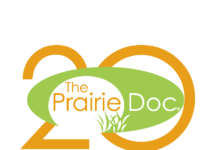Proper thawing and preparation important in preparing turkey, says Blakeslee
MANHATTAN, Kan – The holiday season can be a great time for family and friends to gather, and Kansas State University food scientist Karen Blakeslee said following proper food safety steps will keep uninvited guests – like foodborne bacteria – from joining the party.
“The basics of cook, chill, clean and separate should guide your meal preparation, serving and clean up,” said Blakeslee, who is also coordinator of K-State’s Rapid Response Center.
Poultry and other meat should not be rinsed before cooking, Blakeslee said. All meat should be cooked to the proper internal temperatures, which include:
• Steaks, roasts, chops: 145 degrees Fahrenheit.
• Ground meat: 160 F.
• All poultry: 165 F.
• Fish and seafood: 145 F.
“Use a food thermometer to verify doneness, not color,” Blakeslee said.
Thawing the turkey is an important component to add into preparation time. “If buying a frozen turkey, purchase it at least one week beforehand to allow enough time for thawing in the refrigerator,” Blakeslee said. “This will depend on the size of turkey you need for your meal.”
Allow about 24 hours to thaw 5 pounds of frozen turkey, but always add an extra day to be sure it gets thawed safely. For a 12 pound turkey, plan on at least three days in the refrigerator.
“Never thaw frozen meat or poultry at room temperature because this can allow any bacteria to grow as it warms up,” Blakeslee said.
Turkey can be cooked from the frozen state, but it will take at least 50% longer to cook.
More food safety reminders include:
• Set oven to minimum of 325 F.
• Wash your hands often.
• Use a shallow roasting pan with a rack and add about ½ cup water to the bottom of the pan.
• Place the turkey on the rack, season as you like and tent with foil.
• Stuffing should be cooked separately as a casserole.
• Foil can be removed after 1 to 1 ½ hours of roasting.
• When using a food thermometer, check the internal temperature at the thickest part of the breast or innermost part of the thigh.
• Refrigerate all leftovers within two hours of serving. Remove turkey meat from the bones and place in shallow containers for faster cooling.
“If hosting holiday meals, ask others to bring side dishes such as salads or vegetable platters to make the meal easier to handle,” Blakeslee said. “Many hands make light work. Just be sure to wash your hands.”
Blakeslee publishes a monthly newsletter called You Asked It! that provides numerous tips on being safe and healthy. More information is also available from local extension offices in Kansas.
-30-
FOR PRINT PUBLICATIONS: Links used in this story
Rapid Response Center, www.rrc.k-state.edu
You Asked It! (newsletter), www.rrc.k-state.edu/newsletter
K-State Research and Extension statewide offices, https://www.ksre.k-state.edu/about/statewide-locations.html
K-State Research and Extension is a short name for the Kansas State University Agricultural Experiment Station and Cooperative Extension Service, a program designed to generate and distribute useful knowledge for the well-being of Kansans. Supported by county, state, federal and private funds, the program has county extension offices, experiment fields, area extension offices and regional research centers statewide. Its headquarters is on the K-State campus in Manhattan. For more information, visit www.ksre.ksu.edu. K-State Research and Extension is an equal opportunity provider and employer.
Story by:
Emily Halstead
[email protected]
For more information:
Karen Blakeslee
785-532-1673
[email protected]




